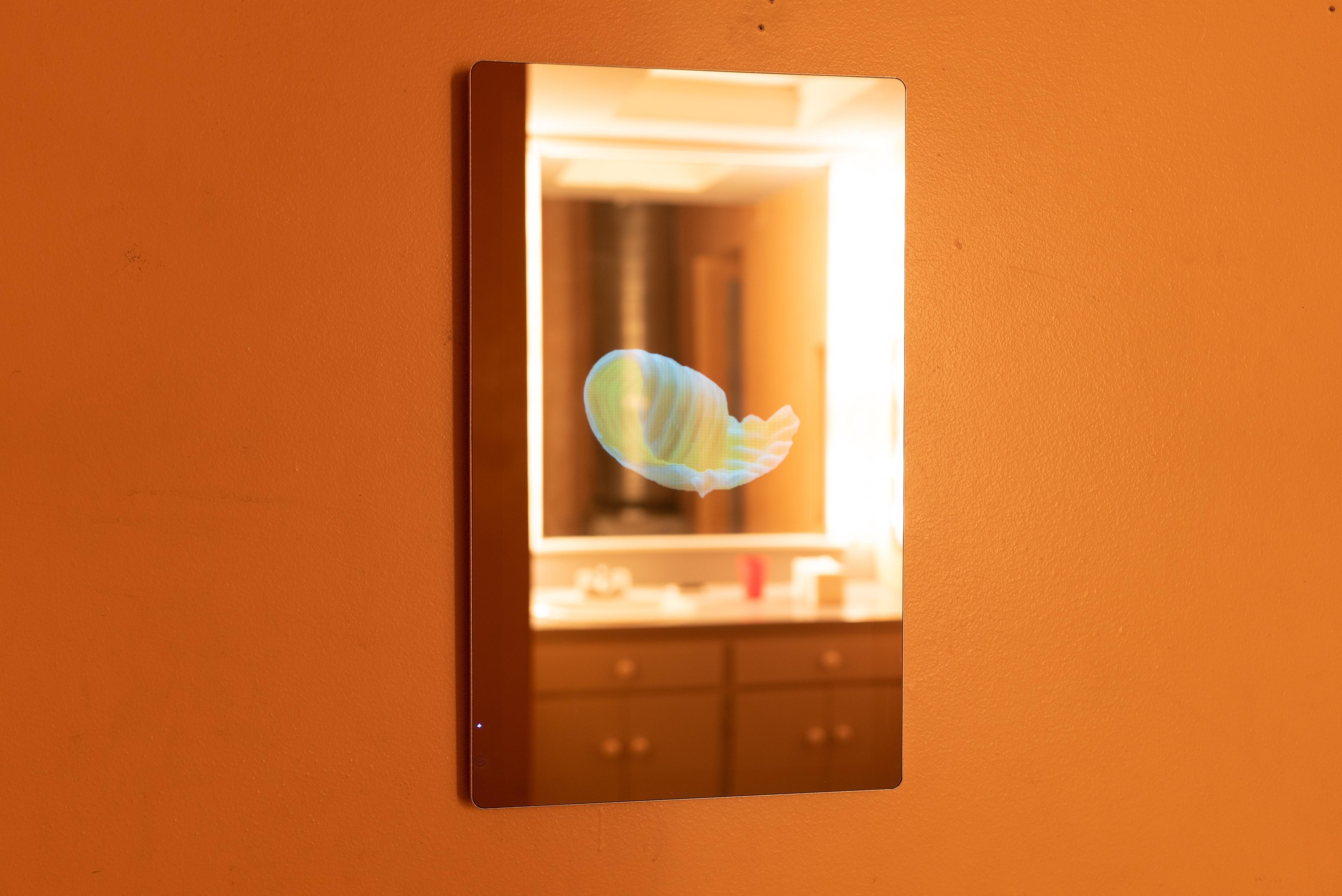ines kivimaki
![]()
![]()
Inès Kivimäki
Glamour Grammar
Single channel video loop with sound, smart mirror. 2024
Glamour Grammar is comprised of a looped chain of AI models designed to generate, or “conjure” a subject from everyday objects. Shown on a “smart mirror,” thereby collapsing the viewer with the subject and manifesting the logic of magical thought, Glamour Grammar seeks an impossible embodiment by using folklore as an entry point for re-thinking how artificial intelligence can function as both a cultural prompt and nascent epistemology. Starting with Google's search engine as an entry point, the video uses pre-existing models and utilizes “AI vision” to analyze and reinterpret a series of found images including a comb, an egg, a needle, a ring, and butter—all items appropriated from the Slavic folk tale of Baba Yaga. The items are described using a deep fake of the artist's voice, positioning these mundane elements as in-between things, an apparition emerging and disappearing into the language used by the AI model.
Originally transmitted orally, the tale of Yegi Baba (also known as Jaga Yagishna, Babaroga and Baba Yaga) takes many forms depending on its idiom and language of transmission, resulting in different objects becoming the focal point. For example, a recurring element in the story is of a slippery medium that shifts subtlety from the Finnish-Karelian terva (tar), to the Ukrainian сало, pronounced salo (lard), to the Russian масло, pronounced masla (oil), to the Polish masło (butter). In each version of the story the narrative arc is anchored to a type of morphological substance. Glamour Grammar evokes a magic mirror—one that conditions and is conditioned by the viewer's reflected body, where the untranslatable and the conspicuous are both translated (or seen) through the outputs of an artificial intelligence. Echoing human cognition, the hybrid objects both anchor and obscure our fantasies of total vision and control.
@ikivimaki

